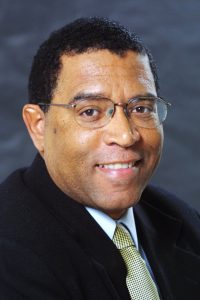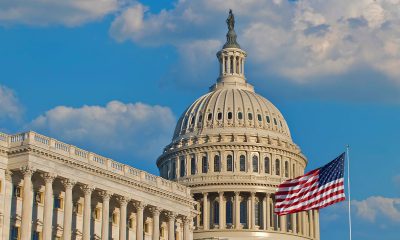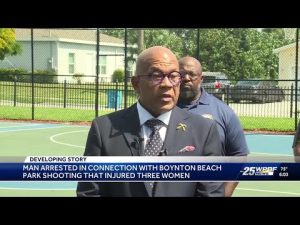Bay Area
Oakland City Council Brings Resolutions for Muslim Awareness Month, Reparations Studies and Protection from Federal Occupation

Oakland City Council met virtually July 28 with many recommended resolutions.
City Council President Rebecca Kaplan recommended a resolution to make the month of August, “American Muslim Appreciation and Awareness Month” in the city of Oakland. There are approximately 90,000 Muslims in Alameda County.
Councilmember Lynette Gibson McElhaney recommended two resolutions to rename streets. One, in honor of Huey P. Newton, on 9th street between Center Street and Chester Street to be named “Dr. Huey P. Newton Way.” Former leader and founder of the Black Panther Party (BPP), Newton was slain in 1989 on the corner of Center and Chester streets.

FILE – This undated file photo shows former Oakland Tribune reporter Chauncey Bailey. A jury on Thursday, June 9, 2011 found Yusuf Bey IV, the leader of a financially troubled community group, and another man guilty of murder in the daytime shooting of Bailey, the first American journalist killed on U.S. soil for reporting a story in more than a decade. Bey, the former head of Your Black Muslim Bakery, also was convicted in the murders of two other men in a month-long spree of violence that culminated with the fatal August 2007 shooting. (AP Photo/Oakland Tribune, File) NO SALES, MAGS OUT NO TV NO INTERNET MANDATORY CREDIT
The other street rename is proposed for 14th between Oak Street and Broadway in honor of Chauncey Bailey to be named “Chauncey Bailey Way.” Bailey was murdered in 2007 and these are the streets where he worked at the Post News Group and where he was slain.
The Office of the City Attorney also recommended a resolution to settle the Ghost Ship cases for $9.2 million to Samuel Maxwell and $23.5 million to wrongful death plaintiffs.
Councilmember Dan Kalb recommended resolutions in support of Assembly Bill 3121 (Weber) to establish a task force to study and develop reparation proposals for Blacks.
Along with Councilmember Noel Gallo and City Attorney Barbara J. Parker, a resolution was made to direct and authorize the City Attorney and the City Administrator to “. . . take any and all lawful necessary steps to protect the rights of the people and the city of Oakland against President Trump’s threats to take actions that result in harm to the people of Oakland or the City of Oakland, and against any related actions Federal Officers take that result in harm to the People or the city of Oakland.”
Alameda County
Seth Curry Makes Impressive Debut with the Golden State Warriors
Seth looked comfortable in his new uniform, seamlessly fitting into the Warriors’ offensive and defensive system. He finished the night with an impressive 14 points, becoming one of the team’s top scorers for the game. Seth’s points came in a variety of ways – floaters, spot-up three-pointers, mid-range jumpers, and a handful of aggressive drives that kept the Oklahoma City Thunder defense on its heels.

By Y’Anad Burrell
Tuesday night was anything but ordinary for fans in San Francisco as Seth Curry made his highly anticipated debut as a new member of the Golden State Warriors. Seth didn’t disappoint, delivering a performance that not only showcased his scoring ability but also demonstrated his added value to the team.
At 35, the 12-year NBA veteran on Monday signed a contract to play with the Warriors for the rest of the season.
Seth looked comfortable in his new uniform, seamlessly fitting into the Warriors’ offensive and defensive system. He finished the night with an impressive 14 points, becoming one of the team’s top scorers for the game. Seth’s points came in a variety of ways – floaters, spot-up three-pointers, mid-range jumpers, and a handful of aggressive drives that kept the Oklahoma City Thunder defense on its heels.
One of the most memorable moments of the evening came before Seth even scored his first points. As he checked into the game, the Chase Center erupted into applause, with fans rising to their feet to give the newest Warrior a standing ovation.
The crowd’s reaction was a testament not only to Seth’s reputation as a sharpshooter but also to the excitement he brings to the Warriors. It was clear that fans quickly embraced Seth as one of their own, eager to see what he could bring to the team’s championship aspirations.
Warriors’ superstar Steph Curry – Seth’s brother – did not play due to an injury. One could only imagine what it would be like if the Curry brothers were on the court together. Magic in the making.
Seth’s debut proved to be a turning point for the Warriors. Not only did he contribute on the scoreboard, but he also brought a sense of confidence and composure to the floor.
While their loss last night, OKC 124 – GSW 112, Seth’s impact was a game-changer and there’s more yet to come. Beyond statistics, it was clear that Seth’s presence elevated the team’s performance, giving the Warriors a new force as they look to make a deep playoff run.
Activism
Oakland Post: Week of November 26 – December 2, 2025
The printed Weekly Edition of the Oakland Post: Week of November 26 – December 2, 2025

To enlarge your view of this issue, use the slider, magnifying glass icon or full page icon in the lower right corner of the browser window.
Activism
Oakland Post: Week of November 19 – 25, 2025
The printed Weekly Edition of the Oakland Post: Week of November 19 – 25, 2025

To enlarge your view of this issue, use the slider, magnifying glass icon or full page icon in the lower right corner of the browser window.
-

 Activism4 weeks ago
Activism4 weeks agoOakland Post: Week of November 5 – 11, 2025
-

 Activism3 weeks ago
Activism3 weeks agoOakland Post: Week of November 12 – 18, 2025
-

 Activism2 weeks ago
Activism2 weeks agoIN MEMORIAM: William ‘Bill’ Patterson, 94
-

 Activism3 weeks ago
Activism3 weeks agoHow Charles R. Drew University Navigated More Than $20 Million in Fed Cuts – Still Prioritizing Students and Community Health
-

 #NNPA BlackPress3 weeks ago
#NNPA BlackPress3 weeks agoThe Perfumed Hand of Hypocrisy: Trump Hosted Former Terror Suspect While America Condemns a Muslim Mayor
-

 Bay Area3 weeks ago
Bay Area3 weeks agoNo Justice in the Justice System
-

 #NNPA BlackPress3 weeks ago
#NNPA BlackPress3 weeks agoProtecting Pedophiles: The GOP’s Warped Crusade Against Its Own Lies
-

 #NNPA BlackPress4 weeks ago
#NNPA BlackPress4 weeks ago2026 Subaru Forester Wilderness Review: Everyday SUV With Extra Confidence


























































